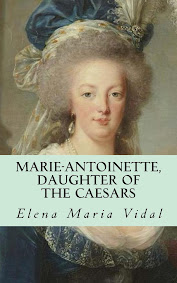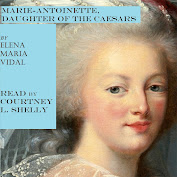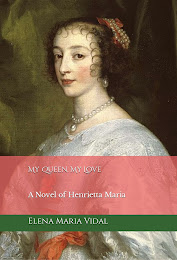I recently listened to the new biography of Pamela Digby Churchill Harriman by Sonia Purnell on Audible. Pamela has found her way into so many stories; I have learned about her in bits and pieces. At last we have as much of the whole story as is possible, although there are aspects of Pamela's life which will no doubt remain shrouded in mystery until the end of time. She came from one of the oldest families in England, the Digbys being able to trace their ancestral line back to the Vikings. They saw the Churchills as upstarts; a Digby daughter marrying Winston Churchill's son was coming down in the world. That a Digby daughter would prove herself to be an adept wartime spy and political mastermind were things no one could have foreseen. Neither could her family have foreseen her conversion to Catholicism. Like the city of Paris she so loved, Pamela would have a love/hate relationship with the Catholic Church, even as she found her way to being the US ambassador to France. For anyone interested in 20th century history, or in how scoundrels like Bill Clinton came to power, Purnell's book cannot be missed. Prepare to be surprised and to find yourself hating old Joe Kennedy more than you thought possible. From The Rake:
There aren’t many people whose lives have such an epic, eventful sweep that they seem to combine the rumbustious picaresque of the 18th-century novel and the slightly more salacious demands of its late 20th-century equivalent. But Pamela Harriman’s was one such life. She was born in England in 1920, into an old aristocratic milieu that the likes of Samuel Richardson (the author of Pamela, lest we forget) may still have just about recognised; by the end of her life, 77 years later, she was an Hon. of a different stripe, a U.S. ambassador to France with three marriages and innumerable affairs with powerful men behind her, and a starring role in Truman Capote’s Answered Prayers, his unfinished tell-all swansong in which he gleefully stripped bare the lives of all his barely disguised socialite friends (not so much a roman à clef as a roman à trousseau de clefs).
In the novel, Lady Ina Coolbirth (a.k.a. Harriman) takes Jonesy (a.k.a. Capote) to lunch at La Cote Basque, where she swigs Cristal and holds forth on various (undisguised) Alpha women, from Princess Margaret (“she’s such a drone”) to Jackie Kennedy and sister Lee Radziwill: “They’re perfect with men,” she says, “a pair of Western geisha girls. They know how to keep a man’s secrets and how to make him feel important.” Capote’s eyebrow was arched to breaking point here, as Lady Coolbirth’s coolly admiring assessment of the sisters was the generally accepted view of Harriman herself; one of her lovers, Baron Elie de Rothschild, called her a ‘European Geisha’, and she was referred to more than once as The Last Courtesan.
She was born Pamela Digby into a gilded but straitened life in Dorset. Her father was the 11th Baron Digby and her mother was the daughter of the 2nd Baron Aberdare. Money was tight — she was able to make her ‘debut’ only after her father placed a lucky bet on the Grand National — and her horizons seemingly tighter. “I was born in a world where a woman was totally controlled by men,” she once said. “The boys were allowed to go off to school. The girls were kept home, educated by governesses. That was the way things were.” (Read more.)
On the Harriman's New York residence. From Daytonian in Manhattan:
ShareThe son of railroad tycoon Edward Henry Harriman, William (better known as Averell) was highly visible in politics and extremely popular. He would go on to be Governor of New York, Secretary of Commerce under Harry S. Truman, Ambassador to the United Kingdom and to the Soviet Union. Entertainments in the 81st Street house were at times more like White House receptions.On July 2, 1953 the Harrimans’ dinner guests were former President Harry S. Truman and his wife, Bess. On September 23, 1954 Franklin Roosevelt, Jr. was a luncheon guest; and on February 5, 1955, when son Gordon Stevenson came home on leave from the U. S. Army, luncheon guests included Adlai Stevenson, the Shah of Iran and Queen Soroya, and Margaret Truman.In April 1955 the Italian Prime Minister, Mario Scelba, visited New York and on April 2 the Harrimans hosted a “private luncheon” for the diplomat. At the table were Cardinal Spellman, Clare Boothe Luce, Italian Ambassador to the United States Manlio Bresio, “and leading members of the Italian-American colony in New York,” according to The Times.Harriman had taken office as Governor on January 1 that year. Seemingly more comfortable in the 81st Street house than in the Governor’s mansion in Albany, he routinely signed state proclamations from here.The Governor underwent a minor operation in 1956 and recuperated in the New York mansion. On June 7 former Kimg Michael of Rumania dropped by the house to pay his respects. Later that year, in December, Golda Meir and Abba Eban were guests for luncheon.Harriman was sensitive to the growing civil rights movement. In the 81st Street mansion, on December 31, 1957, he inducted Harold A. Stevens as the first African American to be appointed to the Court of Appeals, New York State’s highest court. (Read more.)


















No comments:
Post a Comment